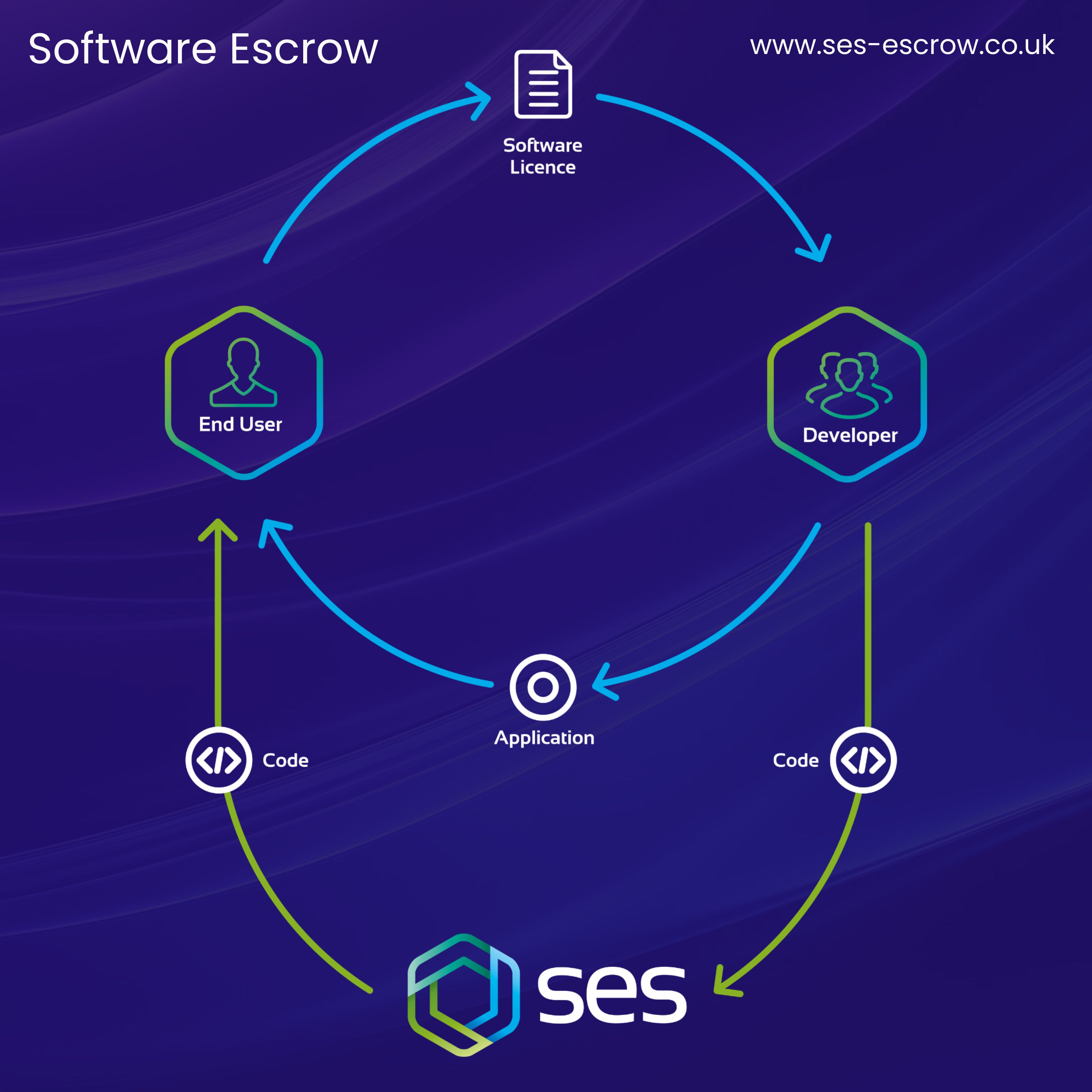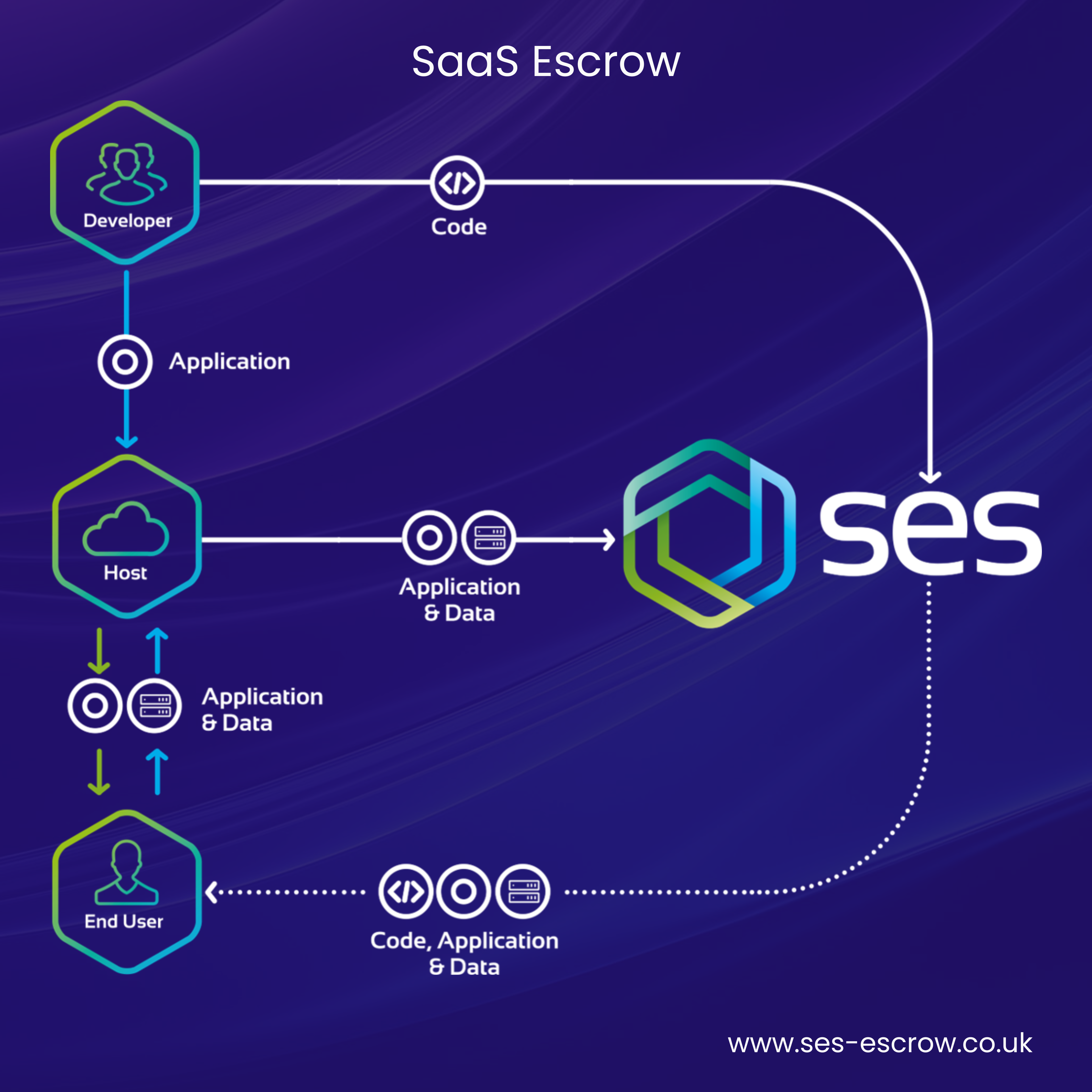For a number of decades, software has been the backbone of countless businesses. The critical significance of software applications couldn’t be any clearer…but what happens when a software vendor (also known as a ‘software supplier’) goes out of business, fails to maintain their product, or breaches a contract? That’s where Software Escrow comes in.
Those that are familiar with Software Escrow may recognise it as a smart, strategic safeguard that protects both software vendors and the end-users of their software applications. However, despite its reputation as a powerful risk mitigation tool, many people still aren’t quite sure what it is or how it works. If that sounds like you, don’t worry, you’re in the right place!
What Is Software Escrow?
Software escrow is a risk mitigation tool that operates within a legal arrangement. This agreement involves a third-party Escrow agent, such as SES Secure, holding the source code, documentation, or other critical components of a software application.
These materials are then only released to the licensee (the end-user) only under predefined conditions, typically when the vendor can no longer support the software. These predefined conditions are widely referred to as ‘release conditions’ or ‘release triggers’.
Not sure what some of the terms and phrases related to Software Escrow actually mean? Head over to our blog, “A Beginner’s Guide to Software Escrow” for a straightforward breakdown.
Who’s Included in a Software Escrow Agreement?
- Licensor (Vendor): The party that develops and licenses the software.
- Licensee (End-User): The party that uses the software vendor’s software and wants assurance of access.
- Escrow Agent: A neutral third party that holds and manages the Escrow materials.

Some key reasons as to why businesses utilise Software Escrow include:
Business Continuity: If a software vendor faces disruption, Software Escrow ensures that their client can still access and maintain the software. Think of Software Escrow as a safety net that ensures business continuity and reduces risk.
Risk Mitigation: A business losing access to a mission-critical application would lead to a whole host of problems, from financial loss to reputational damage. Software Escrow ensures that such software systems always remain operational and accessible.
Trust Building: Having a Software Escrow Solution in place as part of a risk mitigation plan fosters trust between software vendors and clients by providing a neutral safety net.
Compliance: In regulated industries, Software Escrow can help meet legal guidelines or contractual obligations.
The following are typically held in Escrow:
- Source code.
- Build instructions.
- Documentation.
- Third-party libraries.
- Configuration files.
- Deployment scripts.
It’s important to ensure that the licensee can rebuild, maintain, and operate the software independently if needed, hence why build instructions are typically held in Escrow.
At SES, alongside traditional Software Escrow Solutions, we also specialise in SaaS Escrow. As the name suggests, SaaS Escrow ensures the continuity and safeguarding of software applications that are cloud-hosted.

Common Release Conditions
As mentioned, Escrow materials are only released under specific, agreed-upon conditions. Common examples include:
- Vendor bankruptcy or insolvency.
- Breach of maintenance or support obligations.
- Failure to meet service-level agreements (SLAs).
- Discontinuation of the software product.
Working with SES Secure
SES Secure have been providing Software Escrow and SaaS Escrow Solutions for over 25 years. To date, we’ve supported over 3,000 clients across 45+ countries.
Our solutions are completely bespoke and cater to the individual needs, preferences, and specifications of each client. However, some practices are present within all client projects:
Regular Updates: Our in-house team of technological experts ensure that the materials in Escrow are updated with each software release.
Verification Services: We provide verification and validation to confirm that the materials are complete and functional.
Clear Agreements: We clearly define release conditions, responsibilities, and update schedules in detail.
We currently have over 200 verified reviews on Feefo. Check them out here.
If you have any questions or would like to arrange a chat with a member of our team, please don’t hesitate to get in touch.